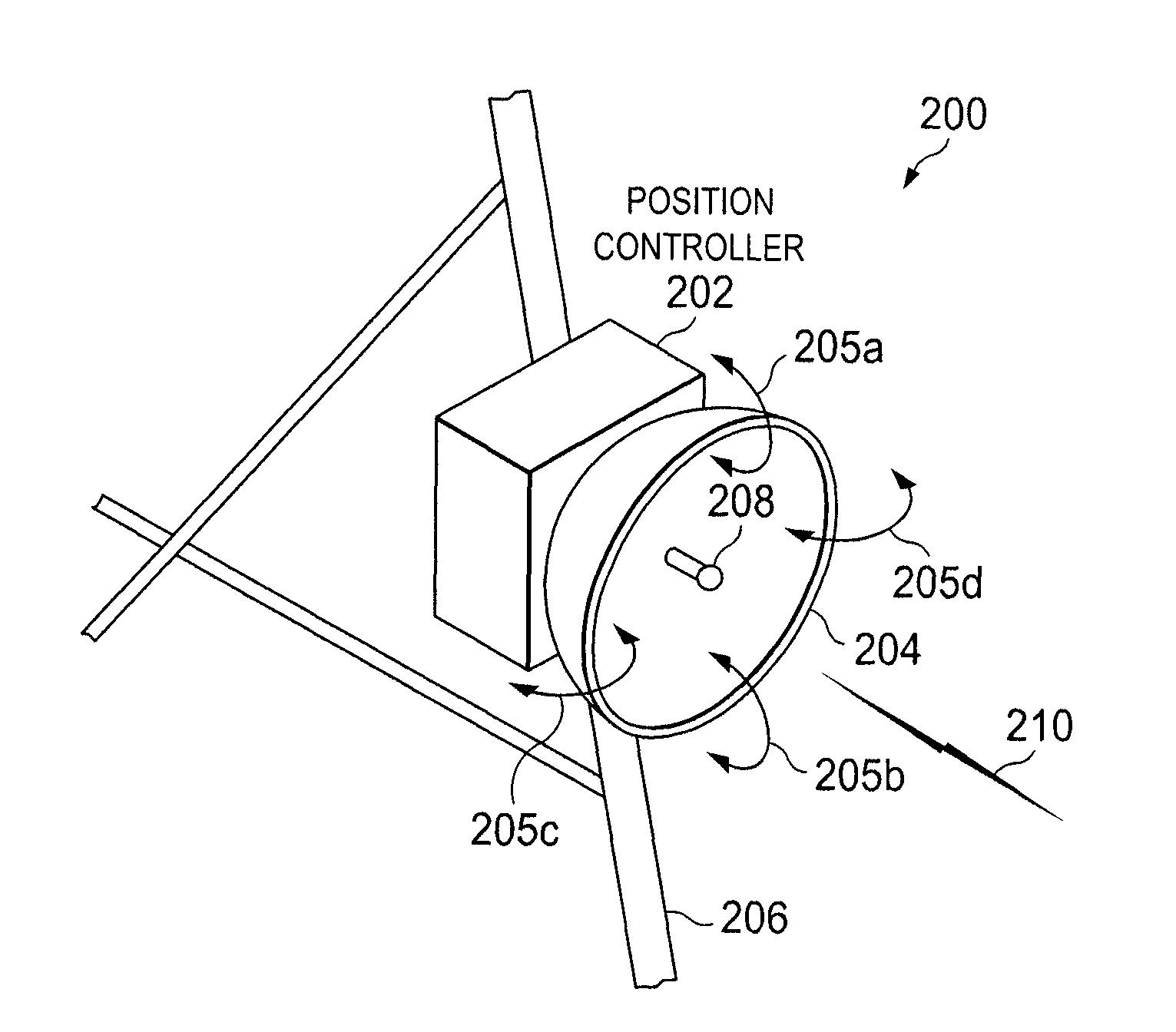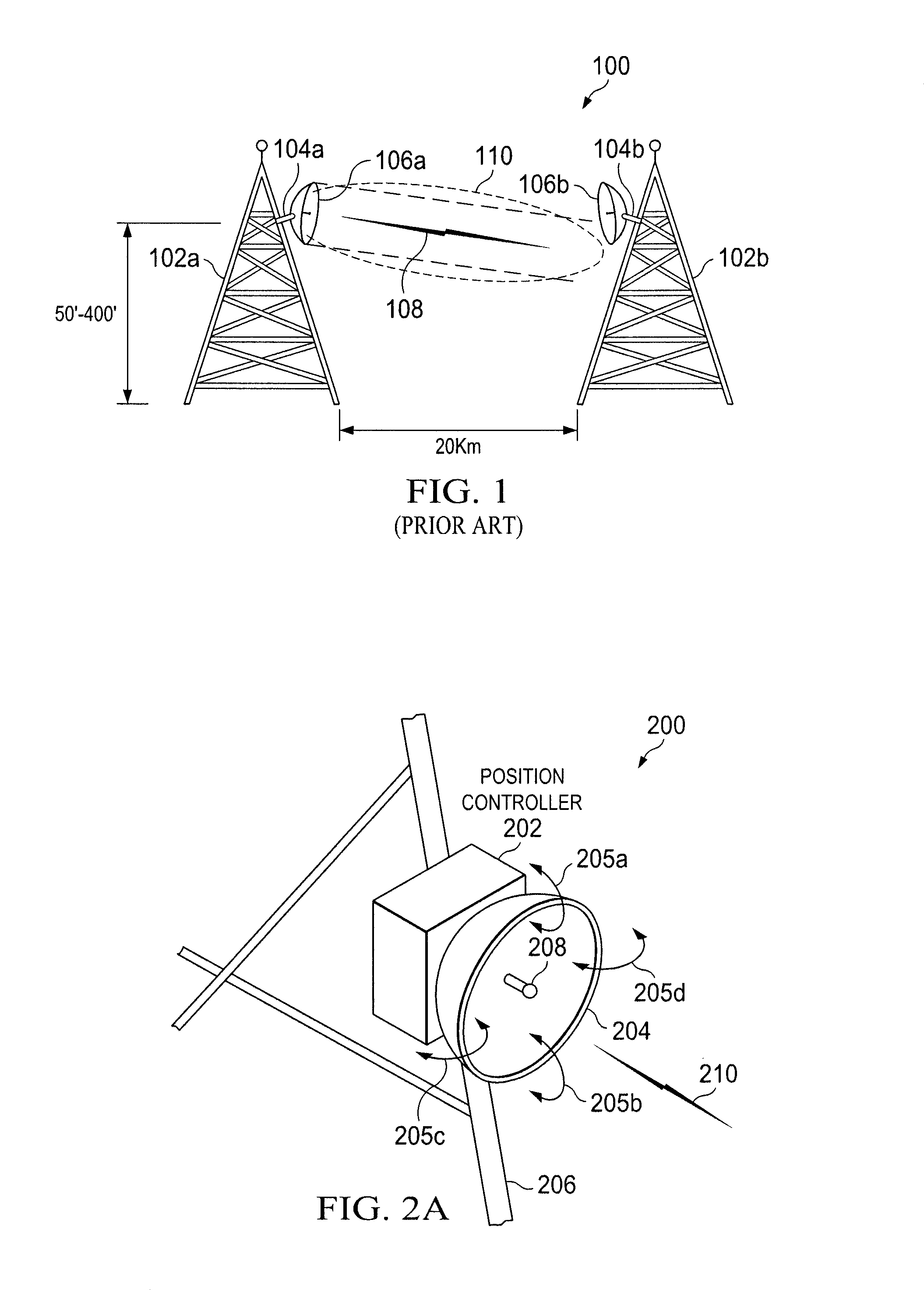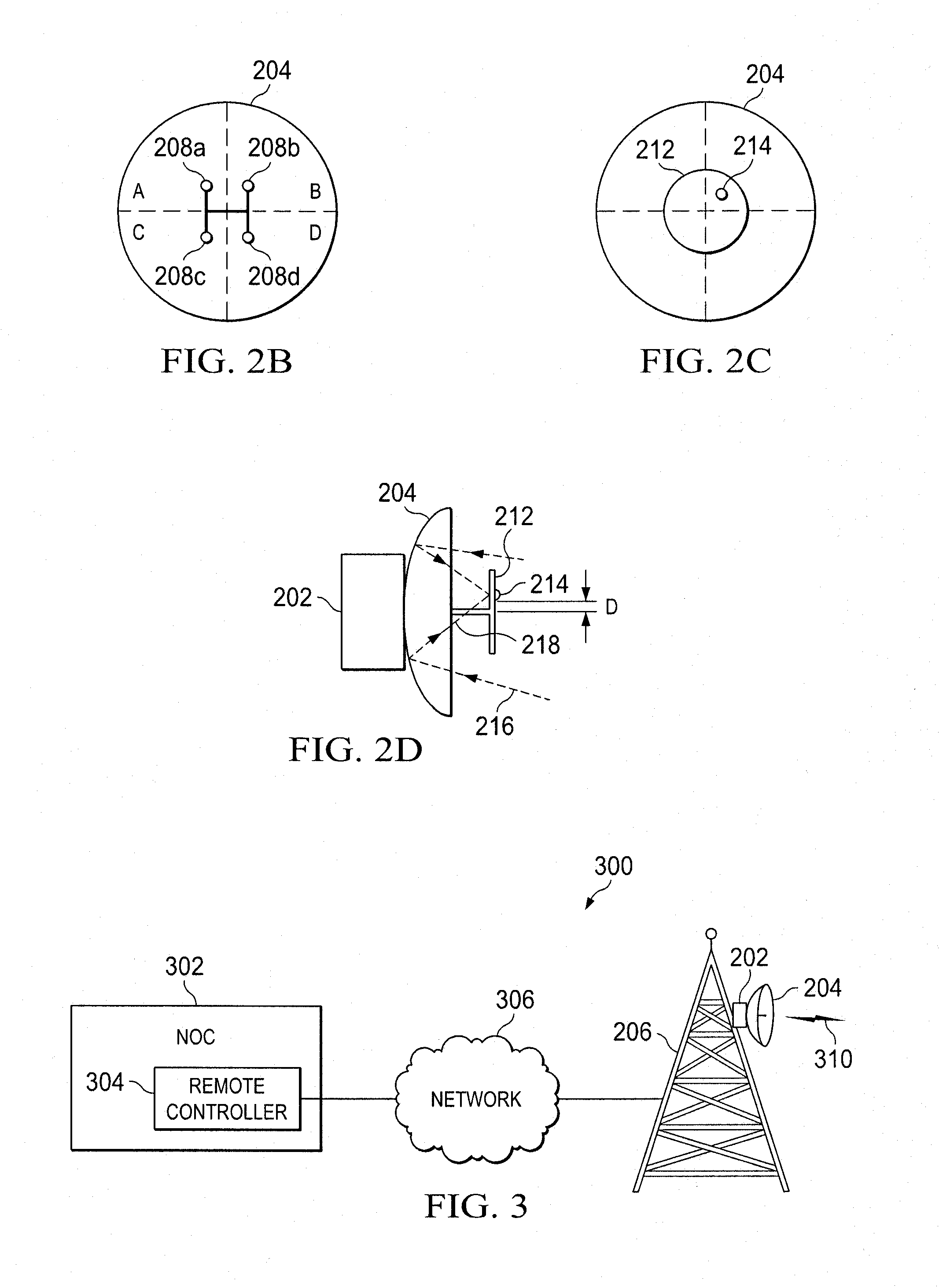System and method for re-aligning antennas
a technology of system and method, applied in the direction of antennas, antenna details, electrical equipment, etc., can solve the problems of dish antennas used for point-to-point network communication to become misaligned, loss of power, and difficulty in maintaining alignment, so as to reduce the cost and delay of antenna misalignment and improve the reliability of network links
- Summary
- Abstract
- Description
- Claims
- Application Information
AI Technical Summary
Benefits of technology
Problems solved by technology
Method used
Image
Examples
Embodiment Construction
[0025]The principles of the present invention provide a system and method for re-aligning antennas. The description that follows is directed to one or more embodiments, and should not be construed as limiting in nature. In one embodiment, an auto-sensing algorithm is incorporated into a position controller that is attached to an antenna to automatically adjust the elevation and azimuth positions of the antenna. The principles of the present invention may also include a semi-automatic and manual mode for allowing a remote operator to manually adjust the antenna using signal strength or position information returned from a position controller.
[0026]FIG. 2A is an illustration of an exemplary antenna system 200 including a position controller 202 for re-aligning an antenna. The position controller 202 may be configured to rotate the antenna 106 in both the elevation and azimuth directions as depicted by rotation arrows 205a-205d. In one embodiment, the position controller 202 and antenn...
PUM
 Login to View More
Login to View More Abstract
Description
Claims
Application Information
 Login to View More
Login to View More - R&D
- Intellectual Property
- Life Sciences
- Materials
- Tech Scout
- Unparalleled Data Quality
- Higher Quality Content
- 60% Fewer Hallucinations
Browse by: Latest US Patents, China's latest patents, Technical Efficacy Thesaurus, Application Domain, Technology Topic, Popular Technical Reports.
© 2025 PatSnap. All rights reserved.Legal|Privacy policy|Modern Slavery Act Transparency Statement|Sitemap|About US| Contact US: help@patsnap.com



